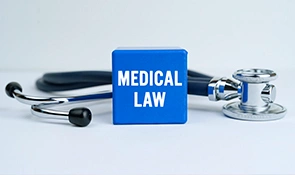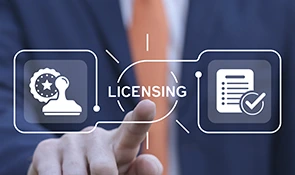
Maintaining standards that make quality medical care accessible is one of the primary fundamentals of the healthcare industry in the United States. However, the healthcare industry, like any other, faces uncertain demand and ever-increasing challenges. The fact remains that there is no room for treatment errors as long as the cost remains optimistic. These are some of the primary reasons why medical credentialing has become so important.
Medical credentialing is similar to a quality assurance process among providers which aids in preventing medical errors. The process entails an extensive verification of educational qualifications, experience, licensure, training background, and other factors. Medical credentialing is required before a provider can participate in on-site procedures in a healthcare facility or when switching to a new insurance provider.
The entire medical credentialing process entails the following:
Doctors, nurses, dentists, chiropractors, physical therapists, podiatrists, optometrists, physician assistants, and mental/behavioral health practitioners must all be credentialed. Hospitals, clinics, surgery centers, diagnostic centers, labs, ambulance services, and sleep research clinics must also be certified.
Physician credentialing is without a doubt one of the most difficult and time-consuming processes. Making a mistake can cost you a lot of time and money. Furthermore, any error in the credentialing process will throw the entire process into disarray, resulting in legal ramifications.
1. Timing and planning mistakes
Credentialing necessitates a massive amount of data. The data used is critical, and the process will take at least 3-4 months on an individual level. The most time will be spent getting credentialed, collecting, and preparing the necessary documents.
For a provider, the delay means that you cannot begin. You must wait until the process is completed before consulting patients and providing services. If a new provider is added, insurance companies will not reimburse. Improper physician credentialing planning can lengthen the wait.
If your application is inaccurate, you have a reason for denial. The common mistakes include:
Mistakes occur frequently during data entry. To avoid such errors, providers must double-check their data entries. Misspelled titles, incorrect email addresses, incorrect postal addresses, incorrect NPI numbers, and incorrect identification/license numbers can all derail the process quickly.
The absence of important information or the complete omission of a required document is one of the most common physician credentialing errors to avoid when manually preparing documents.
Poor document handling and organization lead to uncertainty and confusion throughout the application process, necessitating frequent resubmissions.
2. Errors in Compliance
Each state in the United States has its physician credentialing requirements, and providers and assistance personnel frequently fail to meet them.
Sometimes, due to a lack of knowledge about the insurance carrier's requirements, the clinic employees tasked with credentialing screwup everything. It takes a lot of practice to do things correctly.
Every insurance company has different requirements for the credentialing and enrollment processes. If the requirements are not met, the payment process is delayed, compromising financial strength.
In addition to other issues with the medical billing process, both have a lack of competence in credentialing or privileging for specialty practices. As a result, specific documentation demonstrating proficiency in the specialty practice will be required during credentialing in addition to the usual requirements.
The clinical staff assigned to the credentialing process may be unaware of the current application's legal implications. Although a layperson's limited understanding of legal terminology is understandable, the practice may be subject to legal liability if things are not done correctly.
3. Errors in the Enrollment Process
Billing and payment are very much linked with the enrollment process. As a result, any flaws in this area could have an impact on how healthcare revenue cycle management is handled. Let's look at some of the most common errors that occur during the enrollment process.
Every insurance company has its own set of rules and procedures for adding new providers to its panel, including deadlines, procedures, and rules. Unfortunately, failing to keep up with the provider's requirements is a common mistake in medical credentialing.
Each insurance company has its own set of criteria for adding new providers to its panel, including dates, procedures, and criteria. Failure to meet the providers’ requirements is a common error in medical credentialing.
Before enrolling, insurance companies may have several questions, clarifications, and primary source verifications. If the facility personnel is not given the proper responsibilities to handle these inquiries for you, it impedes the payment procedure.
Insurance companies may have a variety of questions, clarifications, and primary source checks before enrollment. If the facility staff is not given the necessary responsibilities to handle these inquiries for you, the entire process may be delayed.
Make sure to get rid of the above-listed credentialing mistakes that can cost your practice by partnering with Credidocs. Credidocs will take care of your credentialing tasks so that you can focus on your care delivery.

Staying up to date with your Arizona medical license is crucial to practicing healthcare. The state requires certain continuing medical education and continuing education credits depending on whether you're a physician, nurse, pharmacist, or part of another healthcare field. These rules aim to help licensed professionals keep pace with changes in healthcare standards, laws, and patient care methods.
This guide breaks down Arizona's required CME and CE courses. You’ll learn their purpose and how to meet these rules while furthering your professional growth.
The state asks doctors to finish 40 CME hours during each Arizona medical license renewal period. Osteopathic doctors (DOs) need 24 hours every year in AOA Category 1-A credits, and 16 of those hours can come from AMA PRA Category 1™ credits.
Doctors with active DEA registration who prescribe Schedule II-controlled drugs must finish 3 CME hours focused on opioids, addiction, or substance-related disorders within each renewal period.
Osteopathic Examiners:
To refurbish an osteopathic Arizona medical license, you should log 40 CME hours permitted by the board in the two years before your license expiration.
Nurses:
Arizona does not demand continuing education hours from registered nurses or licensed practical nurses when renewing an active license. Nurses are still encouraged to stay current with clinical knowledge.
Pharmacists:
Pharmacists in Arizona need 30 hours of CE every two years. This includes:
The Arizona medical license renewal happens every two years and must be done by the pharmacist’s birthday.
Healthcare workers take this course to better grasp addiction and how it affects those they treat. It looks at how addiction works in the brain how common it is, and treatments that work like medicines or therapy.
The state requires this training to address problems linked to opioids. The course teaches everything from stopping misuse to handling and treating OUD. It includes therapies for behavior change and treatment with medication.
This vital training offers methods to treat chronic pain in a safe way through opioid therapy. It covers opioid medications how to prescribe them how to reduce potential side effects, and when to look beyond opioids for other options.
This all-encompassing course tackles both general substance addiction and specific opioid dependency. It teaches about medications like Gabapentin and Pregabalin and familiarizes healthcare providers with Medication Assisted Treatment (MAT).
Doctors in Arizona need to follow state rules when giving controlled substances. This program explains drug laws, types of drugs, ways to reduce harm, and how to stay within legal guidelines.
Arizona provides CME course packages to help healthcare workers renew their licenses with less hassle. These packages focus on fulfilling the state’s specific requirements. A standard package often includes:
These packages make it easier for healthcare professionals to cover required topics and meet standards.
Meeting Arizona’s CME or CE rules isn’t tied to keeping your license. It plays a big role in keeping care standards strong. State-required courses help you handle tough health issues like chronic pain or addiction. They also safeguard your patients and your career.
Healthcare keeps changing fast. Learning more as you go helps you stay up-to-date adjust to shifts, and do well in your job. Take time to review what your license needs and pick programs approved by the state that are well-accredited.
In Summary:
To renew a healthcare license in Arizona, professionals must meet certain continuing education standards based on their field. A doctor handling controlled substances or a pharmacist updating knowledge about immunizations needs to stay updated and on top of these requirements. This helps them follow the rules while continuing to provide quality care to their patients. For more details, contact Credidocs professionals.

Continuous growth of digital health companies is putting increasing pressure on health laws and regulations to catch up. Even though technologies like telemedicine and virtual care have transformed the healthcare industry, healthcare providers are still required to comply with requisition rules set by each state. As a result, organizations face increased regulatory responsibilities, spend more time managing license requirements, and are unable to allocate resources to improving patient care. Modern provider licensing requires applying innovative and technology-driven solutions. Licensing management becomes a vital tool in this situation.
Licensing safeguards whether doctors and other healthcare providers meet the standards of practice. There are different licensing rules and schedules in every state or territory, with varying costs involved. Dispensaries need to have licenses in all states where they serve patients, a challenge for multistate companies.
There are generally two key steps in obtaining a license.
Failure to meet licensing requirements may lead to administratively suspended licensure, fines, and the halt of patient treatment.
Administrative expenses for licensing and credentialing amounted to nearly $950 billion for healthcare organizations in 2019. Without streamlined systems, providers face:
Licensing plays a vital role in maintaining the operations and success of digital health organizations.
1. Inconsistent State Requirements
Managing the differing requirements for paperwork, fingerprints, and background checks can be challenging, often making it difficult for providers to operate in multiple states.
2. CME Tracking
All healthcare professionals are required to participate in CME programs to maintain their licensure. Keeping up with the various CME requirements for each state, manual methods can become overwhelming.
3. Regulatory Changes
Licensing laws evolve frequently. It’s important to anticipate changes to ensure compliance and prevent mistakes.
4. Pass-Through Fees
It's important to monitor and record expenses related to licensure renewal to manage healthcare provider licensing costs effectively.
5. Supervision Agreements
Supervising physician agreements differ from state to state and determine the extent of a mid-level provider’s independence in practice and prescription writing.
Technology as a Licensing Ally
PSV is foundational to compliance. It directly verifies the authenticity and validity of a provider’s credentials. PSV supports:
Credidocs is a licensing management tool built for digital health organizations. It simplifies and optimizes the licensing process, allowing businesses to lower their risks, cut down on workload and grow more efficiently.
Key features include:
The effective management of licensing helps ensure the delivery of the highest quality care, safeguards patients, and empowers practitioners. Digital-first licensing platforms like Credidocs eliminate inefficiencies, help providers move freely across state lines, and allow time to be spent where it counts, delivering care without borders.
Plan for a demo with us to understand how the Credidocs platform simplifies the licensing procedure.

American physicians must follow a prolonged multistep application process to obtain their medical license when applying in multiple states throughout the country. The Federation Credentials Verification Service (FCVS) that the Federation of State Medical Boards (FSMB) created assists physicians by simplifying their licensure process. The service serves as a safe platform to confirm and maintain physician certifications, which optimizes license acquisition and reduces needless administrative steps.
FCVS operates as an electronic system that both verifies and keeps records of significant physician credentials. Thousands of physicians from 1996 to present trust FCVS which the FSMB originally established as a credentialing verification system. Physicians who maintain their verified profile in FCVS can distribute it whenever necessary instead of sending identical documents to multiple boards.
How FCVS Works
The FCVS process is organized and systematic. Here’s how doctors can get started:
Step 1: Physicians gather necessary documents such as:
Step 2: Create an FCVS account by checking the FCVS website.
Step 3: Submit all the above-listed documents, including medical education as well as training records, to FCVS.
Step 4: FCVS independently verifies each submitted document with the issuing institutions, ensuring accuracy and authenticity.
Step 5: Once verified, the credentials are securely stored in the FCVS electronic database.
Step 6: Doctors can then request their FCVS profile to be transmitted to any participating state medical board as required, streamlining the application process.
FCVS offers the following exclusive benefits for both doctors and licensing authorities:
1. Time-saving and Convenient
Physicians eliminate the task of manually providing credentials to separate state boards since their documents are available for future license applications. The verification process makes documents available for every subsequent licensure application that physicians file through the system.
2. Trusted Verification
FCVS verifications that come from official institutions directly check their accuracy, which accelerates license approvals and eliminates unnecessary verification efforts from state boards.
3. Multi-State Licensing
The process of applying for licensure in several states is simplified by having a verified FCVS profile because physicians won't need to confirm or re-validate their credentials - especially beneficial for locum work and telemedicine practitioners.
4. Secure and Organized Storage
The system securely maintains all sensitive documents under a single protected storage, which safeguards against data loss while defending against fraud and identity theft.
5. Reduces Paperwork
Digital processing dominates the certification process, which minimizes the need for paper documents in each licensing application.
The U.S. medical boards widely recognize the Fast Credentialing Verification Service (FCVS) as a choice for the application process even though its acceptance varies by state laws. FCVS stands as an optional system for specific medical boards, although particular types of licensing applications, such as those for international medical graduates and telemedicine, must utilize FCVS. This FCVS speeds up the entire licensing procedure in states with heavy administrative requirements.
FCVS charges fees for enrollment as well as credential authentication:
Medical professionals usually consider FCVS beneficial because its efficiency outweighs its expenses when they aim to apply for positions across different states.
Through its role as a powerful support system, FCVS facilitates medical licensure handling for physicians working in complex environments. The essential credential storage systems of FCVS create time savings for healthcare professionals while minimizing administrative work to enable better state-to-state practice.
Medical professionals who establish their FCVS profile ahead of medical license applications will reduce delays from unreported documentation needs and quicken the application runtime. The service from FCVS provides trusted verification services to state boards, which results in a simpler and more predictable licensure process. A complete FCVS profile can help both applicants and medical professionals with their license needs.
For more details, contact our team at Credidocs. Our service at Credidocs enables physicians to obtain their licenses quickly despite the reduced stress levels. The first step toward medical practice starts with booking a consultation about licensure from our expert team.
Coprights ©2025 CrediDocs. All Rights Reserved Privacy Policy Terms & Conditions
Coprights ©2025 CrediDocs. All Rights Reserved